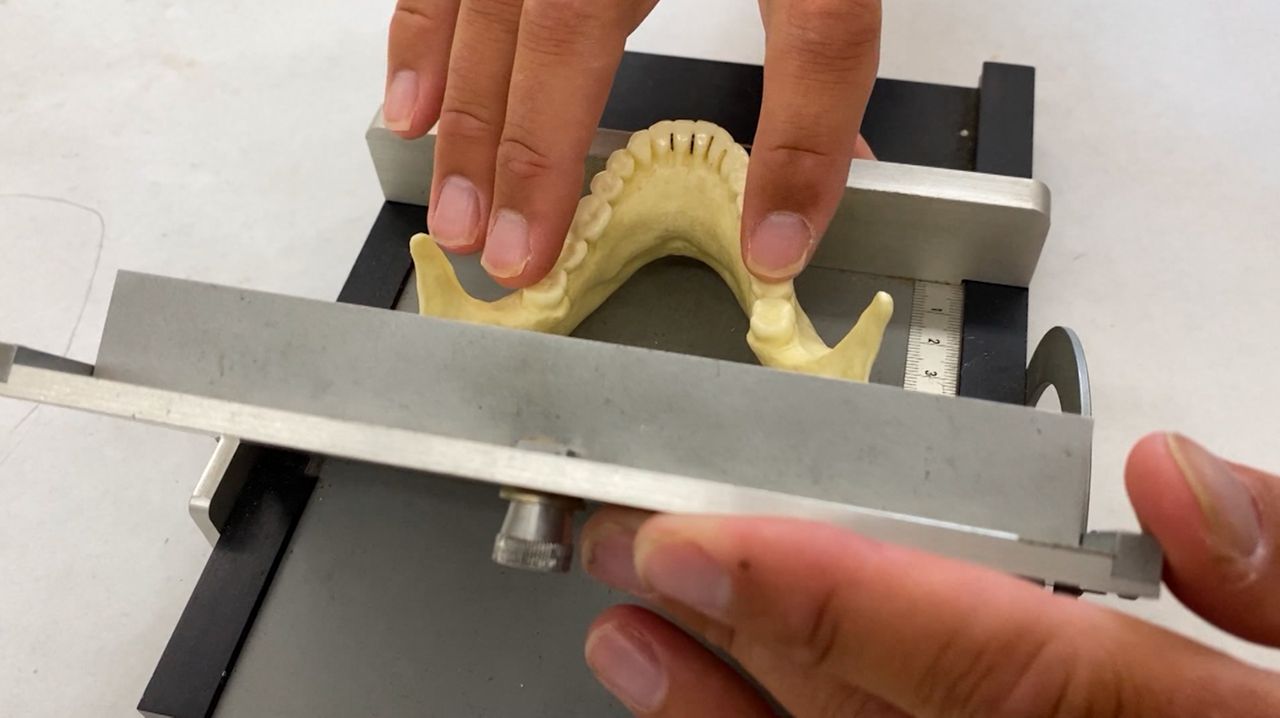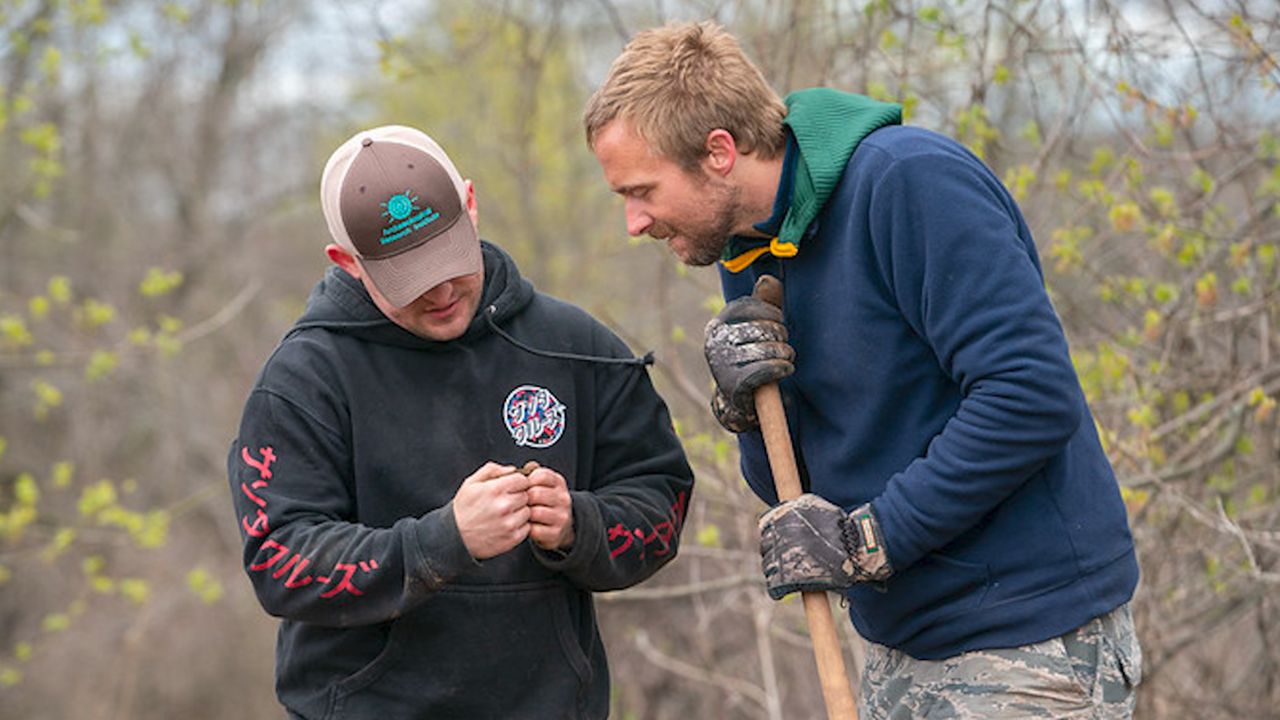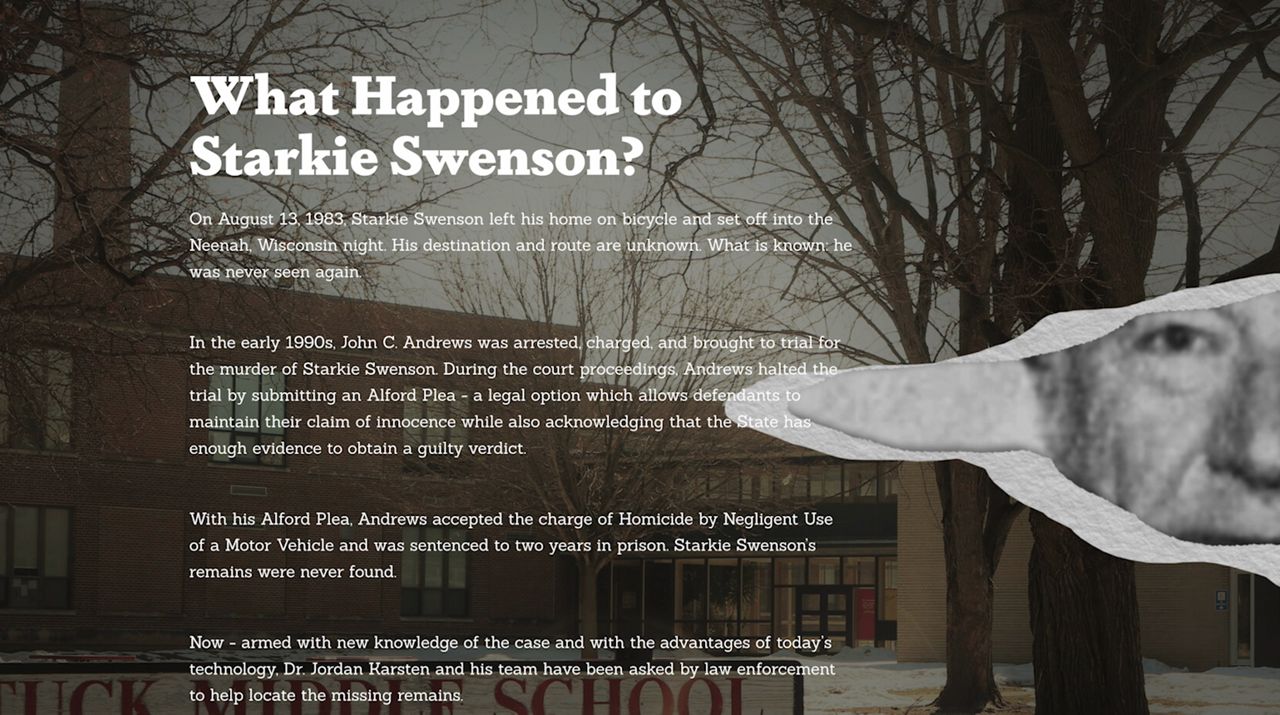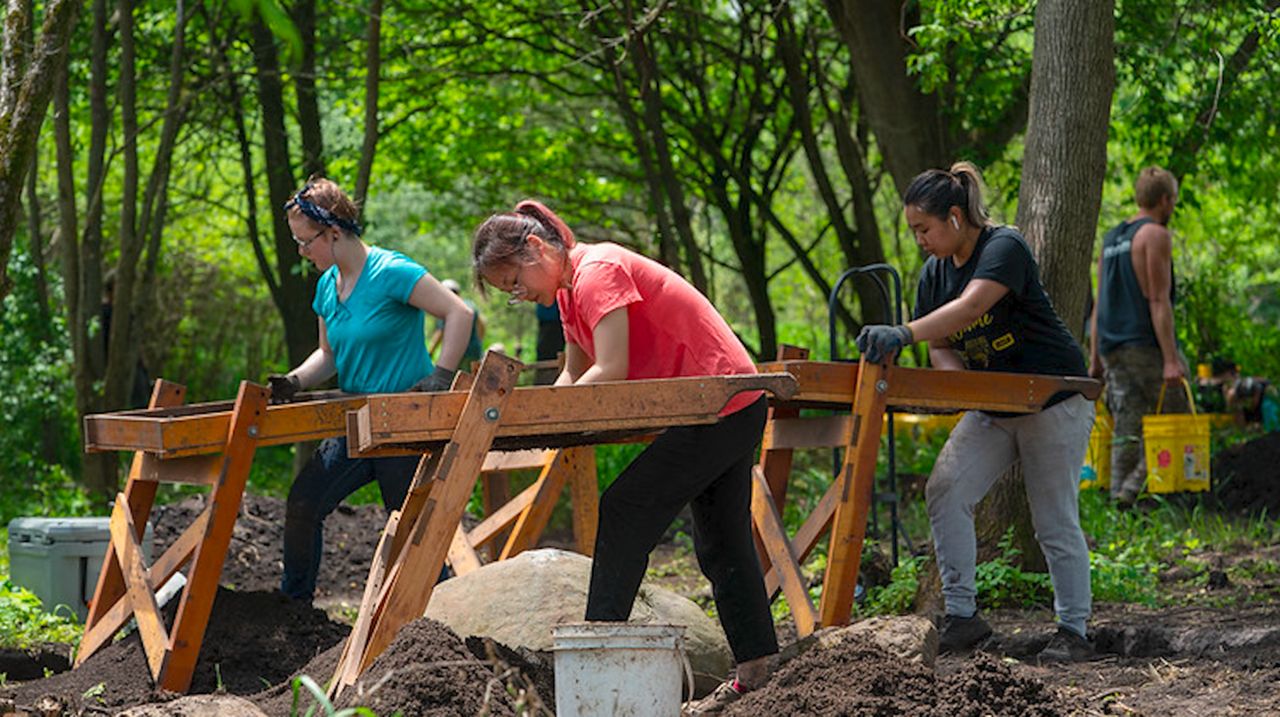OSHKOSH, Wis. — Jordan Karsten spends a lot of time investigating bones. He recently demonstrated taking measurements of a lower jaw.
“There are statistical programs we can use,” said Karsten, Chair of the Anthropology Department at UW-Oshkosh. We take a bunch of mandibular measurements and use them to determine sex, but we can also use them to determine ancestry.”

He demonstrated with replicas, but when real bones need to be examined by law enforcement, they go to Karsten for help.
“We love to do searches. It helps get us out of the office,” said Karsten.
His students get hands-on experience, digging for remains and determining who or what they belonged to. Karsten said most identification requests sent his way end up being animal bones.

But not always.
“We got involved with a search for a missing man from Neenah. In the process, I decided because the search was going to take a lot of time and effort, I was going to organize a class around it.”
He then thought the best way to present the background information was to start a podcast. The long-form format was ideal for exploring the case.
“A lot gets lost if you can’t spend time to get into the nitty-gritty of what happened there,” said Karsten.
Karsten along with Matt Hiskes started the Cold Case: Frozen Tundra podcast. They explored in detail the 1983 disappearance of Neenah resident Starkie Swenson.

Feedback from listeners was positive, but there was one common request. There was another disappearance case from the area that received a lot of media attention over the years.
“Everyone told us, 'Hey, you should look into Laurie Depies.'”
On Aug. 19, 1992, the 20-year-old Depies disappeared from the Fox Valley. The lack of physical evidence and eyewitnesses has puzzled investigators for almost 30 years.
“There’s nothing else. There’s nothing to submit to the lab to use new technology on. There’s just very little physical evidence, if any,” said Kyra Schallhorn, who worked on the case for the Wisconsin Department of Justice for over a decade.
Schallhorn still thinks and dreams about the unsolved case. When she got word of the podcast, she decided to help. Hiskes and Karsten interviewed Schallhorn and used her answers throughout season two.

Schallhorn thinks the duo told the story of Depies well.
“It would be awesome if we could find her body,” Schallhorn said. “That would be a huge thing for some sort of resolution for her mother, for her father, for her sister, and then to solve it and eventually figure out who did this to her.”
They’re crowdsourcing the investigation now, and say even small tips could help break the case.
“That little small piece, when added into the puzzle, could be something that changes the way investigators look at the case,” said Karsten.
Schallhorn agreed. She thinks with the passage of 30 years since the disappearance, someone with valuable information may feel more comfortable now stepping forward.
“It has opened up the story to a new audience,” Schallhorn said. “I think the tips that are coming in can only help.”
Tips sent to the podcast get forwarded to law enforcement.

Last November, Starkie Swenson's remains were located by hikers at High Cliff State Park. Karsten and his students worked the excavation site and confirmed Swenson's identity.
Karsten's been quiet about Swenson due to ongoing legal proceedings surrounding the case, but he’s now able to discuss more details of the case now, and listeners should expect an interesting update soon.



